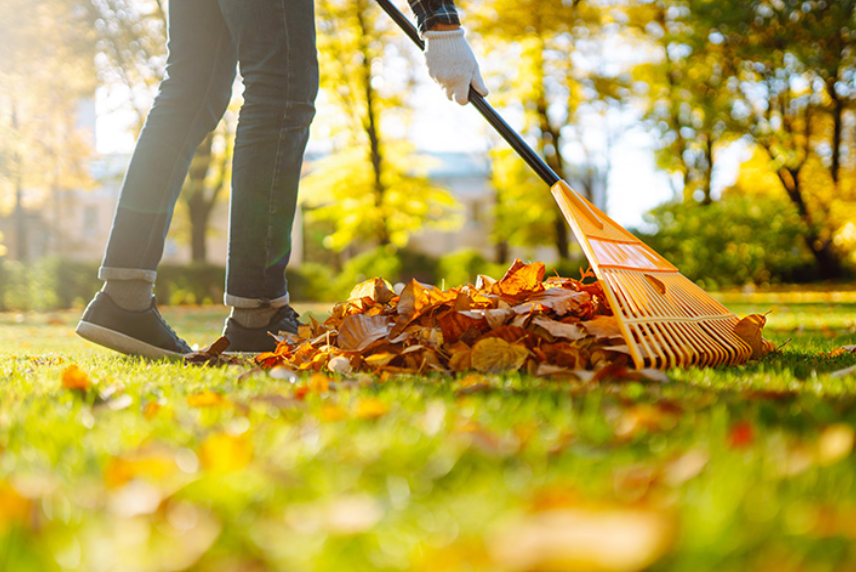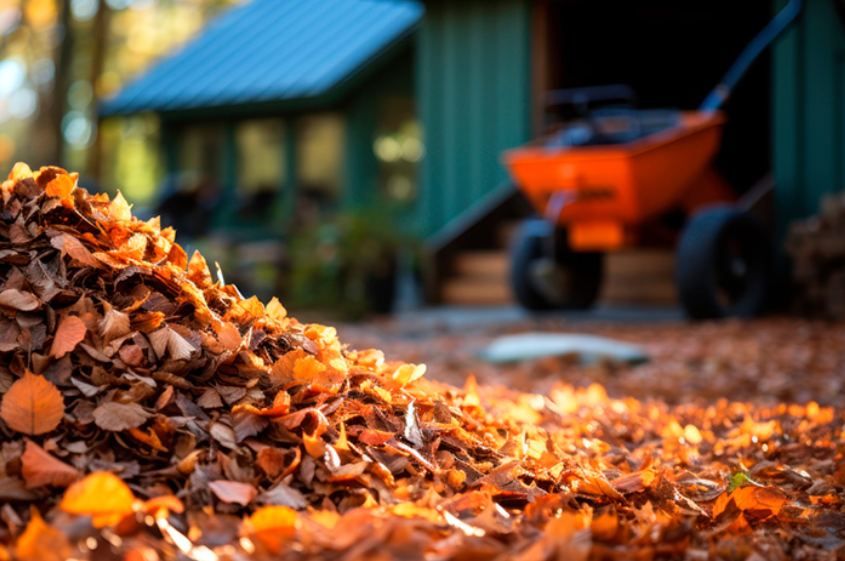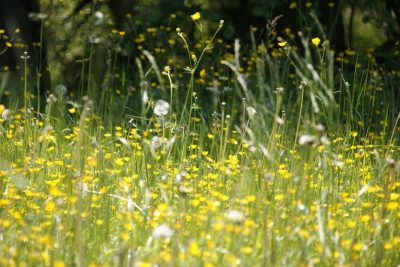Autumn dresses our gardens in vibrant hues of red, orange and yellow, creating a picturesque landscape. But this colourful spectacle presents many homeowners with the question of whether to rake the fallen leaves or leave them lying. Each decision has its own benefits and affects both the well-being of the garden and the surrounding environment.
This article aims to shed light on the benefits and consequences of both options so you can make an informed decision that suits your needs and preferences. And for those who prefer a tidier garden, Helpling is ready to help you rake and dispose of your fall leaves as you prepare your outdoor space for the colder months ahead.
Rake leaves together: Wait until all the leaves have fallen first

Fall leaves enrich the soil with nutrients and promote a healthy ecosystem. The problem arises when the leaves are in too dense layers and can choke the lawn. Researchers have developed guidelines to know when to rake. If less than 50% of the lawn is covered with leaves, raking is not necessary, but running the lawn mower over the leaves to shred them is recommended. If there is more than 50% leaf coverage, it’s time to get out the rake!
Steps for effective fall cleanup:
- Use your lawn mower: With less than 50% leaf cover, the lawn mower will shred the leaves and return nutrients and organic matter to the lawn.
- Wait until all the leaves have fallen: Don’t start raking too soon; a few leaves won’t hurt the lawn. Divide the job into sections and rake area by area.
- Choose the right tools: a rake and proper gloves can prevent blisters on your hands and make the job easier.
- Stretch: Stretch before raking to avoid sore muscles. A 10-minute warm-up is recommended.
- Small movements and breaks: use short pulls and change sides to avoid overexertion.
- Use the wind: On windy days, work downwind and make smaller piles.
- Don’t rake wet leaves: wet leaves are heavy and sticky, making the job more difficult.
If you need professional assistance with your fall cleanup, find garden helpers through Helpling to help you rake and dispose of your fall leaves.
Avoid raking wet leaves

Wet fall leaves can prove to be a particular challenge. When leaves are wet, they stick together and become heavy, making raking and collection difficult. In addition, when collected in piles, wet leaves can quickly lead to mould growth, which in turn creates unpleasant odours and potential health risks.
Here are some reasons to avoid wet leaves:
- Difficult to handle: Wet leaves are heavy and sticky, making raking a tedious and strenuous task.
- Mildew: Wet leaves collected in a pile can quickly mould and rot, leading to unpleasant odours and an unhealthy environment.
- Risk of slip-and-fall accidents: Wet leaves can be very slippery on sidewalks and driveways, posing an increased risk of accidents.
However, if you are forced to rake wet leaves, try to make small piles and dispose of or compost them as soon as possible to minimize mould and accident risks. Proper timing and technique are critical to making the job efficient and safe. While raking wet leaves is not ideal, it is sometimes unavoidable, especially when heavy rain follows fall days. However, you should always be careful to proceed judiciously to keep your garden in optimal condition during the fall.
Ditch the fall foliage: Enjoy the benefits of a healthier garden
Leaving leaves lying around can actually have a variety of benefits for your garden. Fall leaves are a natural source of nutrients and organic matter that enrich the soil and help retain soil moisture. It also acts as a natural mulch and protects the soil from erosion.
Here are some reasons why you might want to leave fall leaves lying around:
- Natural fertilization: Fallen leaves decompose and become humus, which fertilizes the soil.
- Winter protection for plants: Fall foliage provides an insulating layer that protects plants from frost.
- Promoting biodiversity: a pile of leaves can provide shelter for small animals such as hedgehogs and is a home for beneficial insects.
- Saves time: You save time and energy that you would otherwise spend raking and disposing of leaves.
Use it as compost for your garden

It may seem strange to leave fall leaves in your garden, however, leaves can serve as a natural fertilizer, improving soil health. It is rich in nutrients and organic materials that can enrich the soil when broken down.
Fall foliage offers the following benefits as compost:
- Soil protection: foliage protects soil from erosion and drying and provides a protective layer against winter cold.
- Nutrient enrichment: during the decomposition process, foliage releases valuable nutrients to the soil, improving its fertility.
- Promoting biodiversity: a pile of leaves is a paradise for numerous small animals and insects that contribute to soil health.
If you decide to use the leaves as compost, it is best to shred them with a lawn mower to speed up the decomposition process. In addition, be sure to spread the leaves evenly so they are not too dense and smother the underlying lawn.
By preserving fall foliage, you not only promote healthy garden flora but also help protect the environment. So, think twice before you reach for the rake next time! Leave the leaves and get your garden ready for next spring!
Autumn leaves on paving stones: pros and cons
Fall foliage on pavers and split tiles can have both pros and cons.
Pros Autumn foliage on paving stones:
- Aesthetics and naturalness: fall foliage brings a warm, natural colour palette that aesthetically enhances the garden and paved areas.
- Soil protection: foliage can protect soil from frost and prevent weeds from growing.
- Ecological benefits: Foliage provides shelter for small animals and insects, as well as being a natural fertilizer when it rots.
Contra autumn leaves on paving stones:
- Slip hazard: wet leaves can be very slippery on pavers, leading to accidents.
- Moisture buildup: leaves can accumulate moisture, which can lead to mould and rot and damage pavers and split tiles.
- Labour: removing leaves on a regular basis can be time-consuming, especially for large areas.
Fall foliage on pavers and split tiles brings both beauty and challenges. While the colourful foliage is natural and aesthetically pleasing, don’t underestimate the potential drawbacks, such as slip hazards and moisture buildup, and take appropriate steps to avoid them. With that in mind, enjoy the fall season and handle autumn leaves safely!
Conclusion
Before you set out to remove the fall foliage from your yard, take a moment to enjoy the beautiful play of colours. The vibrant reds, oranges and yellows are a real feast for the eyes and symbolize the beauty of change and transience. Nevertheless, after viewing, it is advisable to remove the leaves or recycle them appropriately to avoid accidents and damage. This way you can enjoy the autumn season to the fullest and take care of your garden at the same time.













